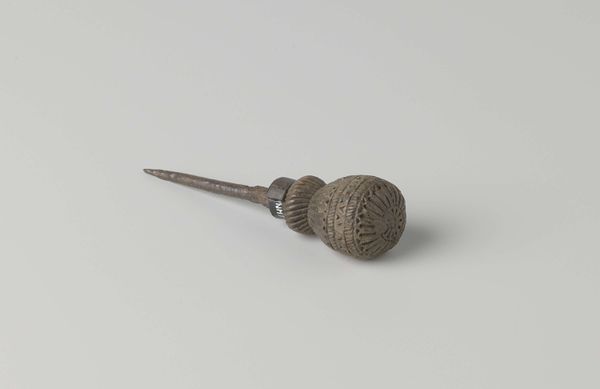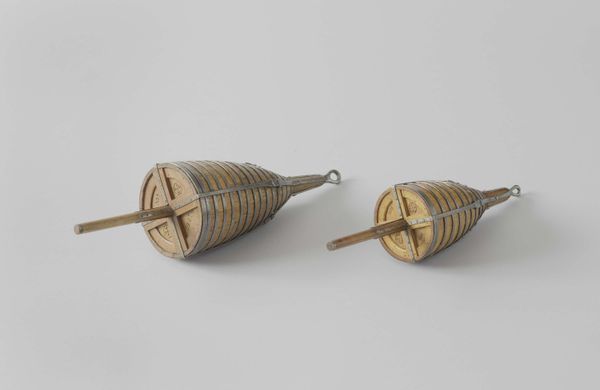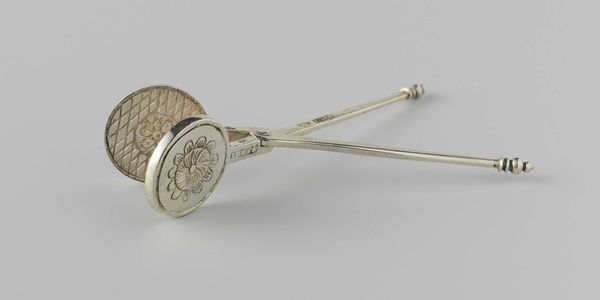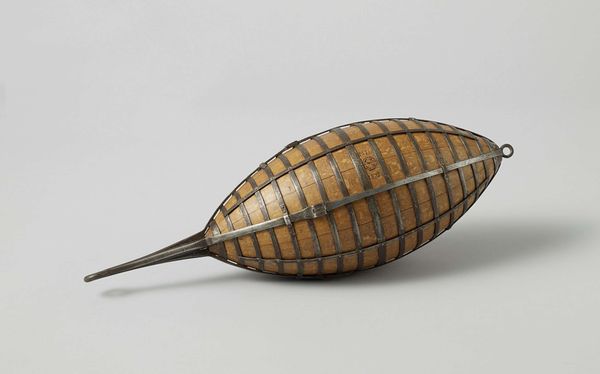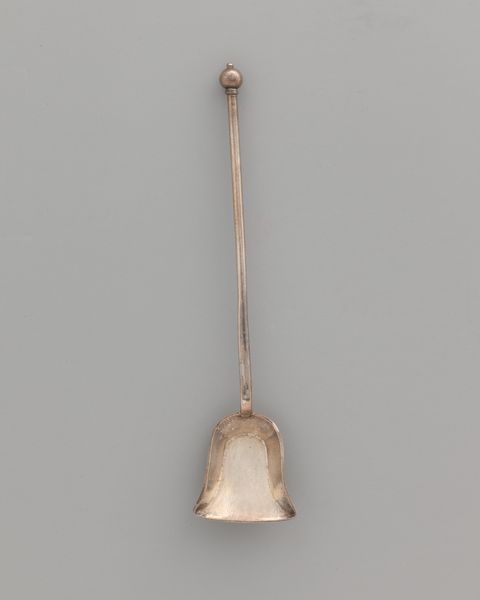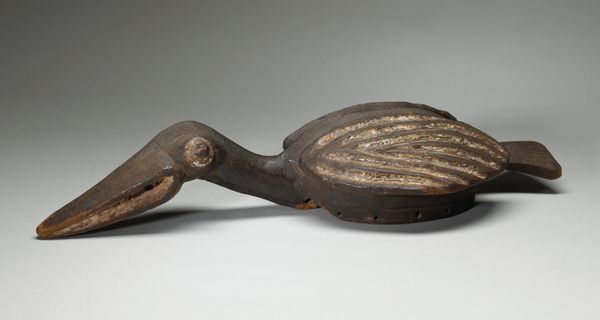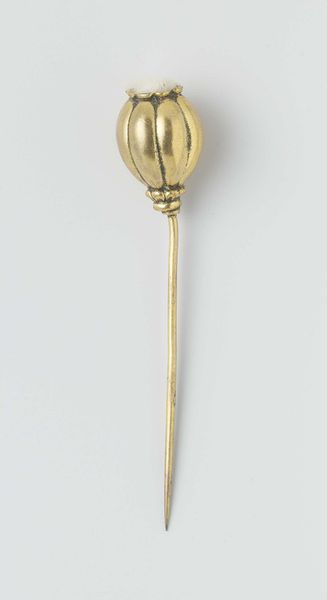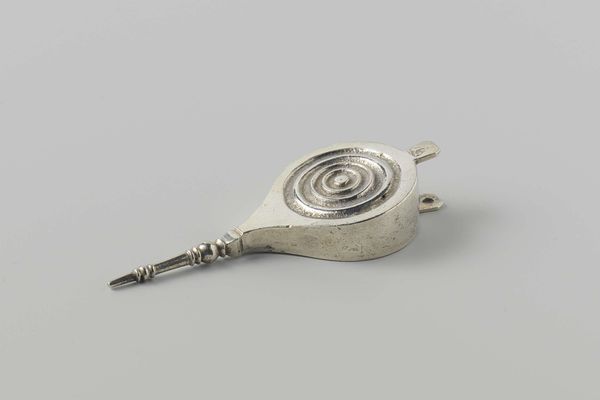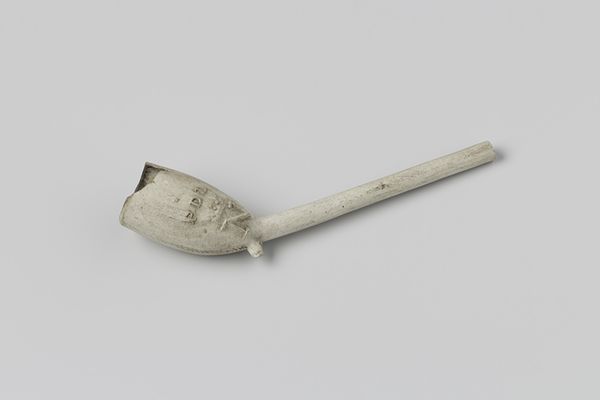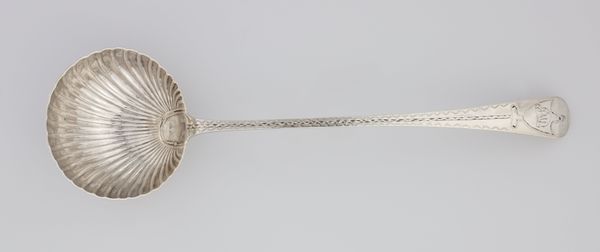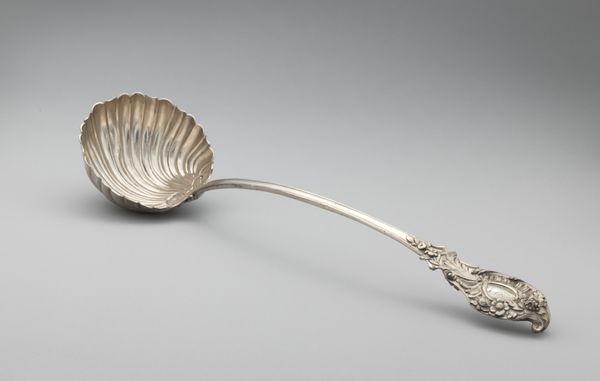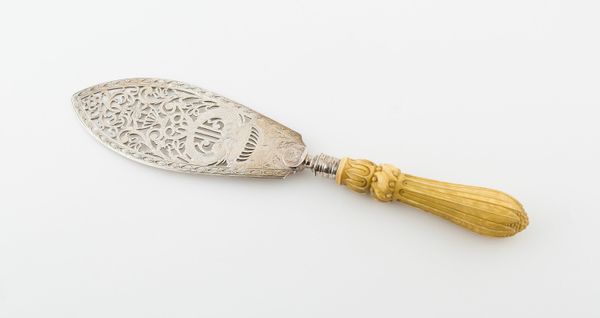
metal, found-object, sculpture, wood
#
metal
#
found-object
#
sculpture
#
wood
Dimensions: length 34.5 cm, diameter 8.3 cm
Copyright: Rijks Museum: Open Domain
Curator: This curious object is a "Model of a Buoy," crafted in 1873 and coming to us from 's Rijks Algemeen Betonningsmagazijn. It's fashioned from an array of materials, including metal, found objects, and wood, resulting in a fascinating sculpture. Editor: My immediate impression is one of surprise at its somewhat decorative form. It is unexpectedly elegant, with those curved staves of wood bound by what appears to be wrought metal. It projects an almost jewel-like refinement. Curator: Indeed. Consider the geometry—the concentric circles of wood meeting the tapering end, secured by precisely placed metal bands. There’s a strong emphasis on symmetry and proportion, creating a visual harmony that transcends its utilitarian purpose. The found objects seamlessly integrate into the overall composition, enhancing its abstract appeal. Editor: Utilitarian indeed. But the beauty lies precisely in that tension, doesn't it? The piece speaks to the material realities of maritime work. You can see the hand of the craftsman in the way the metal is bent and fitted around the wood. I'm intrigued by the selection and shaping of materials. The rough hewn aspect of the central beam emphasizes both the labor and the ingenuity required in its making, the practicality necessary in its former usage. Curator: I agree that its essence resonates beyond its functional role, invoking notions of semiotics; perhaps the X that’s fashioned on either end. We must also acknowledge that it reflects more than its purpose, instead speaking to historical shifts in design and philosophy, making this far more interesting than it would otherwise be. Editor: Perhaps also a certain maritime culture? There’s an unspoken understanding in that combination of practicality and beauty that seems unique to coastal communities. What exactly constitutes a ‘found object,’ and how can it relate to an understanding of this particular item? Does the term ‘found object’ detract from or add to the understanding of the historical role it played? Curator: These sorts of pieces force us to question assumptions of value in art. Its structure provides its beauty. The composition has balance despite asymmetry, and I must profess my admiration of that achievement. Editor: For me, I find beauty in that handcraft and process made real by the raw nature of the material. This is so much more than mere craft, but speaks to labor, materiality and, yes, even consumption. The materials themselves testify to an entire forgotten realm.
Comments
No comments
Be the first to comment and join the conversation on the ultimate creative platform.
